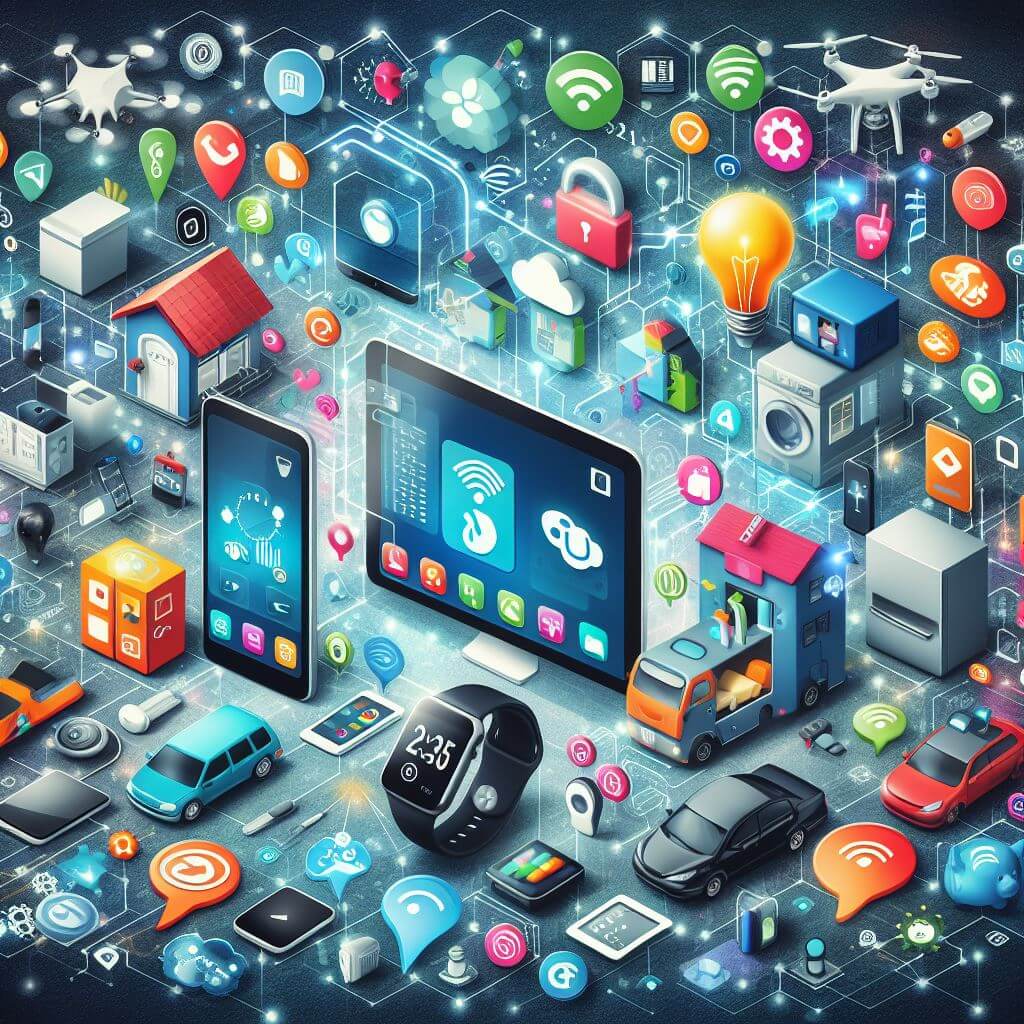The Internet of Things (IoT) is emerging as a transformative force, reshaping the way cities operate and enhancing the quality of life for residents. The role of IoT in urban development is transforming the way we live, work, and interact with our surroundings. As more urban areas turn into smart cities, IoT becomes the central nervous system that powers innovations aiming to uplift the quality of urban life.
What is the IoT and how does it fit into urban development?
IoT refers to the vast network of physical devices that collect and share data through the internet. From fridges that order milk before you know you’re out, to sensors embedded in roadways to monitor conditions, IoT is the digital heartbeat that thrives on connectivity and data. For urban development, IoT devices offer a pathway to managing a city’s assets, resources, and services with unprecedented efficiency and responsiveness.
Eco-Friendly Cities
Urban centers, often associated with high environmental impact, are undergoing a transformative shift towards sustainability, thanks to the integration of the Internet of Things (IoT) in urban planning. The role of IoT in creating eco-friendly cities is paramount, offering innovative solutions to monitor and address environmental challenges. 
IoT applications empower cities to monitor air and water quality in real-time through smart sensors. This data is invaluable for policymakers, providing insights to formulate effective strategies for environmental preservation. By identifying pollution sources promptly, cities can implement targeted measures to maintain cleaner air and water, fostering a healthier urban environment.
Smart grids, a product of IoT integration, play a pivotal role in optimizing energy usage and promoting the adoption of renewable energy sources. Through monitoring and management of energy flow, cities can reduce their carbon footprint and move towards more sustainable practices. The result is an urban landscape that actively contributes to the global push for cleaner energy solutions.
IoT transforms cities from passive entities to proactive participants in ecological preservation. With data-driven insights, urban planners can implement policies that actively enhance the ecological scene. This includes initiatives such as smart waste management, green infrastructure development, and the promotion of sustainable practices among residents.
Traffic and Transit
Traffic congestion and inefficient public transport can make city living stressful. IoT intervention in urban mobility is paving the way for smoother, faster, and less stressful commutes. Traffic lights adjust in real time to traffic conditions, reducing unnecessary stops and improving flow. Public buses equipped with GPS and IoT sensors provide updates to commuters’ smartphones, drastically reducing wait times. IoT-enabled bicycle-sharing schemes make last-mile transportation a breeze. Thanks to IoT, time spent stuck in traffic could soon be a thing of the past as data-driven insights keep urban life moving.
Smart Buildings
In the heart of a smart city, buildings are interactive spaces sensitive to the needs of their inhabitants. IoT devices in buildings regulate energy consumption, ensuring that heating, cooling, and lighting are used optimally, cutting down energy bills and environmental impact. Building managers can track and maintain systems effortlessly, preemptively addressing issues before they become problems. Inhabitants enjoy personalized environments that adjust to their preferences automatically. These aren’t just buildings; they’re intelligent environments that redefine what it means to live and work in an urban space.
Responsive and Resilient Urban Environments
IoT’s impact on urban development shines brightly when it comes to enhancing public safety. Cameras and sensors translate into watchful eyes and ears that can detect and respond to emergencies faster than ever before. Smart street lighting increases visibility and deters crime. In the event of natural disasters, IoT systems can provide real-time data to emergency responders for efficient and effective action. A city equipped with IoT is safer.
Waste Management
Waste management is a critical aspect of urban living, and the integration of Internet of Things (IoT) technology is transforming how cities address this challenge. The inefficiency of traditional waste management systems is evident in overflowing bins and unpleasant odors. However, with the implementation of smart waste management solutions, cities are experiencing positive changes.
IoT-enabled sensors placed in waste bins play a pivotal role in optimizing waste collection. These sensors communicate with collection services, notifying them when bins are nearing full capacity, thus preventing overflow and maintaining cleanliness. This enhances the efficiency of waste collection and contributes to a more hygienic urban environment.
Participation and Governance
IoT paves the way for a participatory approach to city governance. Residents can provide instant feedback on urban services via apps, making their voices heard. City administrators can tap into a wealth of data to make informed decisions that reflect the needs of the community. Governments can hold themselves more accountable, with clear, data-driven metrics for success.
The Infrastructure
While the innovations driven by the Internet of Things (IoT) are transforming urban landscapes, it’s essential to acknowledge the foundational support provided by robust infrastructure. Beyond the gadgets and applications, significant investments in broadband and wireless networks form the backbone of successful IoT integration. This article sheds light on the pivotal role of infrastructure in ensuring the seamless operation of IoT technologies.
The effectiveness of IoT technologies hinges on the availability of high-speed, reliable networks. Cities need robust broadband and wireless infrastructure to support the vast network of interconnected devices. This necessitates substantial investments in the expansion and enhancement of communication networks, ensuring that data can flow seamlessly between devices.
As reliance on IoT devices grows, so does the importance of data security. The interconnected nature of IoT creates a vast web of data exchange, making it imperative to establish stringent security measures. Investing in cybersecurity infrastructure becomes paramount to safeguard sensitive information and maintain the integrity of the IoT ecosystem.
Developing the physical and cyber foundations of IoT technology is a dual imperative. On one hand, cities must invest in tangible infrastructure like communication networks and data centers. Simultaneously, there’s a pressing need for cybersecurity frameworks to protect against potential threats and ensure the privacy of citizens using IoT-enabled services.
